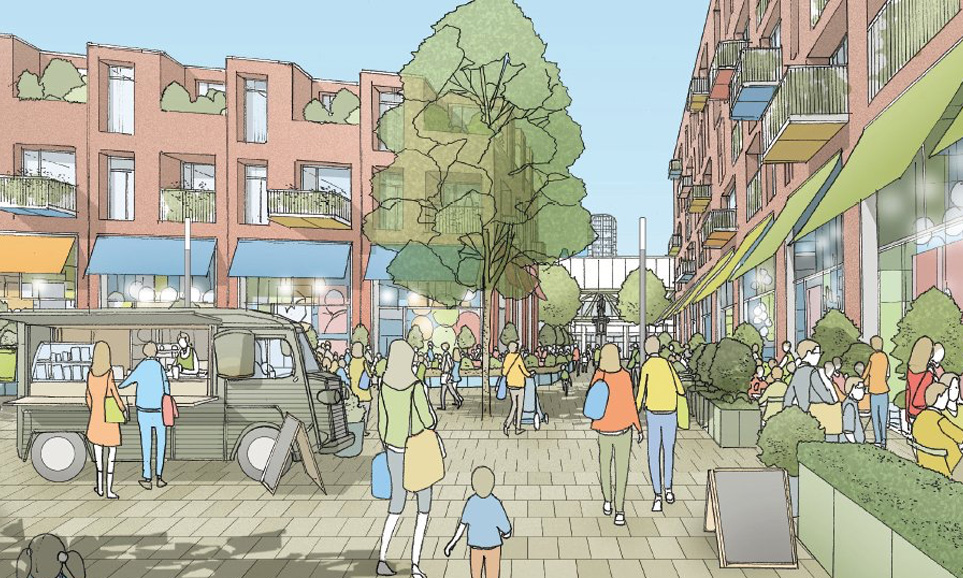
Solving the town centre regeneration puzzle
In this guest blog, #bettertowns co-founder, Brian Thompson, discusses how now more than ever we need a multidisciplinary, collaborative, data-driven approach to regeneration in our towns and the new #bettertowns roadmap is a new innovative way to do this.
The new Use Classes Order has certainly opened the door to the more rapid re-configuration of commercial premises within town centres and elsewhere. In theory, the new freedoms provide an opportunity to ‘build, build, build’ the distinctiveness of town centres. It is to be hoped that landlords, tenants, occupiers, investors and of course local authorities can seize the moment to recreate character and identity for mutual advantage – and for the benefit of the local community and visitors.

Traditionally, the professional recommendation given to councils for many decades, whether internally or externally, was to adopt a one-size-fits-all approach and you are bound to preserve the vitality, viability, sustainability and economic prosperity of the town – because it has worked elsewhere. So, we saw the following:
- the creation of out-of-town retail and business parks – that drew economic activity away from town centres
- the drive to secure big-name retailers and that much sought after prize, the anchor tenant – at the expense of local traders and diversity
- a proliferation of ‘olde worlde’ signage and other symbolism echoing the past – which just looked odd outside a neon lit McDonalds
- a further gesture here and there towards public realm – that often became unofficial skateboard parks and a magnet for graffiti artists
- and more recently the adoption of the ubiquitous ‘cultural quarter’ – that translated into a collection of outlets promoting no more than the culture of eating and drinking.
One-off initiatives can, if ring-fenced, appear to make sense in isolation if you take a narrow view of the expected benefits and outcomes. It is also very tempting to follow the trend because, according to the theory, it would not have become a trend if it didn’t make sense.
But the writing has been on the wall for more than a decade, and this isn’t just about the momentous shift in the retailing landscape. Covid-19 has exposed the enormous elephant the room – many of us don’t need a traditional office environment to add value for our employer. We go there because it is there, and it fits the corporate culture to do so. Towns that have been reliant on a substantial office occupier base need to build a compelling case to retain (at least some of) those occupiers. On the other hand, towns on the periphery of cities might capitalise on a predicted decentralisation away from costly city centres with inherent accessibility challenges. We are already seeing new council operating models emerging with small core operations and spoke facilities closer to communities – and a leading UK bank is about to implement precisely the same model for its non-retail operations.
Now more than ever, towns need to take stock and re-establish their USP. It is easy to fall into the trap of developing a USP in a bubble and without due regard to the ‘S’ word – selling. That means the buyers of the proposition must see value in it. And that means knowing who your buyers are, establishing their needs, and tailoring your offering. In effect, councils need to be led by the science (in this sense, evidence from thorough market research, meaningful engagement and data analysis) when working out what makes their towns special.
A multi-dimensional approach is needed – not one led purely by transport, culture and heritage, property investment, design or similar specialisms. The network of cause and effect must be understood. This applies not just within the town boundary but across the economic area meaning the vision for Town A will inevitably impact on, and by impacted by, the visions for Towns B and C.
And a multi-agency vision is non-negotiable today. When councils talk about having a ‘shared vision’, does that mean it is simply shared internally or is there genuine buy-in from public sector partners, key business partners, the third sector, and the community?
The #bettertowns consortium, created by a collaboration between HLM Architects, realestateworks and Didobi, has created a roadmap for towns to help councils on a journey towards a sustainable future through a series of discreet ‘junctions’. Progress can quite literally be mapped out and presented graphically.

A foundation of the roadmap is the creation of a pragmatic vision that is unashamedly evidence and data led. That vision must also have real meaning and avoid the use of bland and generic aspirational statements. Strong governance, ideally cutting across partners and other stakeholders, will not guarantee success but its absence may contribute to failure. The consortium can put councils on the right track, and help steer them on their journey.
It is now time to dust down those tailored clothes, get fit for the future and abandon the comfortable trousers forever.
For more information go to www.bettertowns.co.uk






Leave a comment: